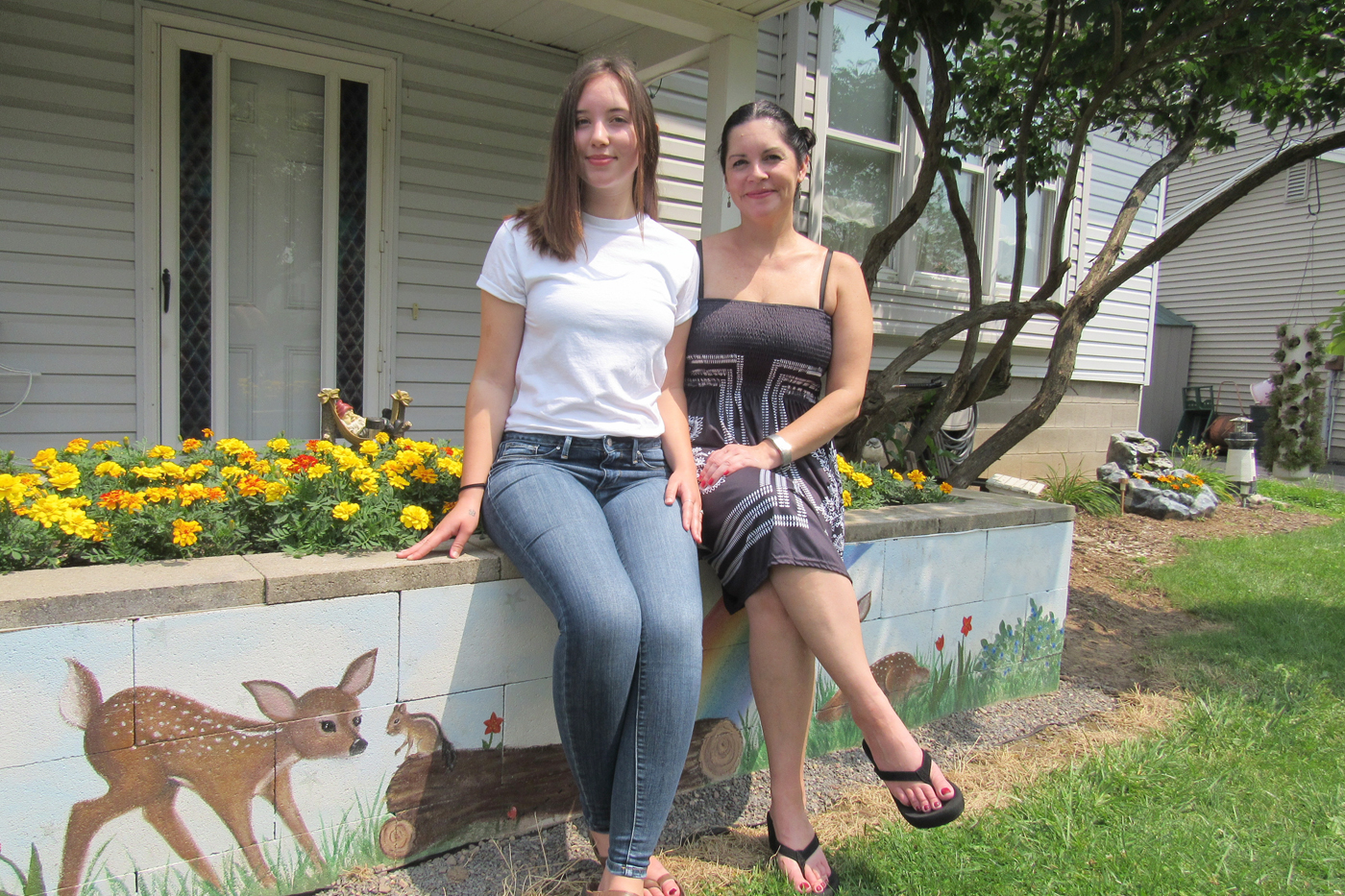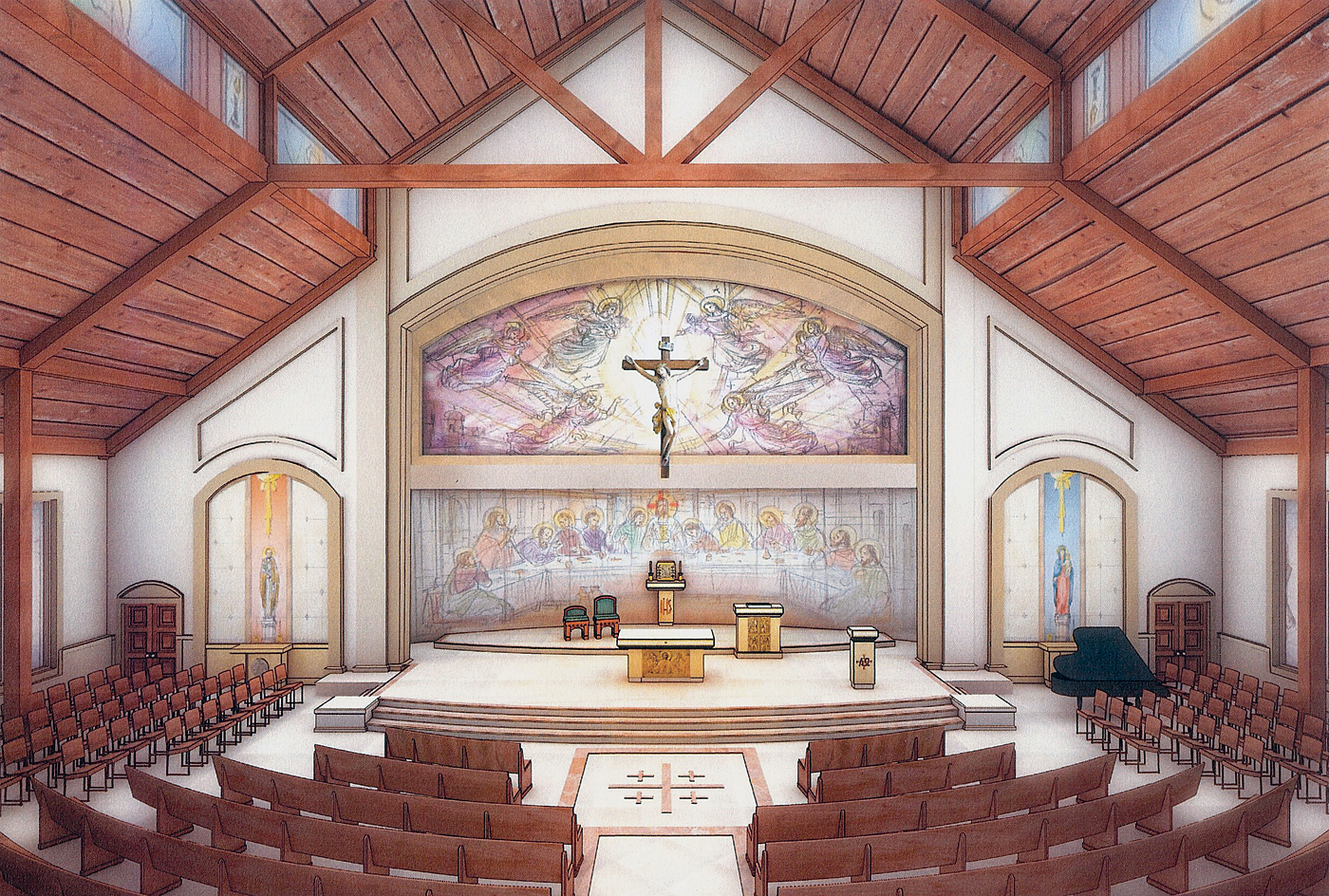Hilton’s first settler remembered for his generosity
by David Crumb
Hilton Parma Historian
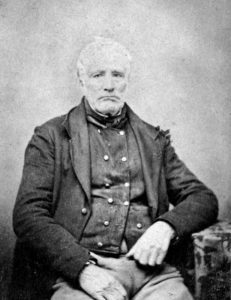
Every village and town in Western New York has their first settler or the person or family who historically is reputed to have had the distinction of being first to stake a land claim, have it recorded, and therefore legally be on record as the first.
The village of Hilton, New York also has a “First Settler” on record. Over the years local historians have told the story of Jonathan Underwood, Hilton’s number one arrival. For members of the community who have not known about Mr. Underwood, I want to take a minute to share his interesting story.
Jonathan Underwood was born at Marlboro, Windham County, Vermont on August 12, 1784 just at the conclusion of the Revolutionary War. Thus far, we have been unable to find, through research, his birth record … probably due to the unsettled affairs following the Revolution. He came from a long line of Underwoods dating back several generations to Martin Underwood born in 1566 at Laxfield, Suffolk, England. Martin was the immigrant who came to Watertown, Middlesex, Massachusetts Bay Colony where he died in 1642 at the age of 76. Martin’s son Joseph (1614-1676) was born in London and died in Watertown, Massachusetts. Third generation was another Joseph (1650-1691) also of Watertown. Fourth generation was yet another Joseph (1681-1761) of Watertown and later Litchfield, Connecticut. Fifth generation was the birth of the first Jonathan Underwood (1716-1794) in Westford, Middlesex, Massachusetts. Sixth generation produced Jonathan Underwood Jr. (1744-1801) of Marlboro, Windham, Massachusetts, and a veteran of the Revolutionary War. Finally, in generation seven, comes the birth of the subject of this article Jonathan D. Underwood (1784-1866).
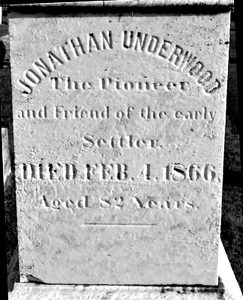
Following the aftermath of the Revolutionary War, in overpopulated New England, began the “westward movement.” Many Revolutionary War veterans and their children began moving into New York state, claiming new fertile yet undeveloped land in order to start a new life. These were the pioneers we read about in our Western New York local histories.
Jonathan Underwood was 21 when he left Marlboro, Massachusetts in 1805 to seek his fortune in western New York. There is no written account of his trip west, but he was 21 and had a girlfriend who he intended on marrying once he established himself. Also, his 57-year-old father had died four years earlier.
Recorded history tells us that Underwood was the first to claim land in what is now Hilton, then known as Braddock Bay Township and an unbroken “first growth” forest. His land claim was on lot 1, Range 4 on what is now South Hill. He purchased a 100-acre track on the east side of South Hill bordered by Salmon Creek to the north. During his first year he cleared 10 acres, built a log cabin at the southeast corner of Rt. 259 and what is now Cedar Terrace Drive. When he felt that he had established a comfortable home and a way to make a living, he returned to Vermont the following year to reunite with his fiancée. When he finally arrived back in Marlboro, most likely having traveled several weeks by horseback, he saw a long line of people going towards the burial ground. Drawing closer, he was informed by old friends that it was his betrothed who had just died a few days before. In those days there were no cell phones, internet servers or even the telegraph. He had been in the wilderness for a year and had no news. He soon after returned to his cabin on South Hill and began his life alone. He never married, but he prospered as a farmer. He developed his land to the fullest, and was a kind neighbor and friend to his community. During “hard times,” he sold his wheat to his friends on credit so they could live comfortably through the winter, instead of selling his produce to others for cash at the highest price.
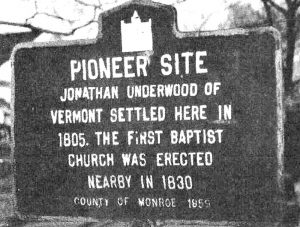
As the years went by, he was held in very high regard by the small community that was developing by Salmon Creek, later to be called Unionville. The first Baptist church was built in 1830 just north of Underwood’s cabin on the summit of South Hill on land he donated. Later, this church was moved, with great difficulty, during the winter months when Salmon Creek was frozen over. It was centrally located on the north side of Main Street. This church burned in 1877. In 1845, Underwood sold his well-developed farm to Gideon Archer, who soon after built a handsome Greek-Revival farmhouse back from the road. That house is still standing and a number of Gideon’s descendants remain in Hilton today. Underwood’s cabin and well were demolished many years ago. A New York State historical marker was once located on the site of his cabin, but disappeared about 20 years ago and has yet to be relocated and replaced.
As Mr. Underwood aged, he moved in with his neighbors across the street, the Henrys. At some time towards the end of his long life, he was taken in by the Ira Wilder family, of Charlotte. He died there on February 4, 1866. Over the years his name and character have not been forgotten. Underwood Avenue bears his name. In the 1950s, one of the local schools was named the Jonathan Underwood School, however, that name has since been changed. There were “old timers” in the early 1900s who could remember him and they wrote in their memoirs recollections of how much he was revered and what he had done for the community as a benefactor.
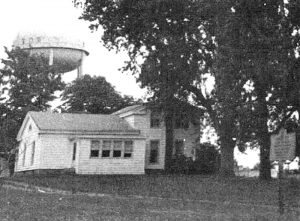
His gravestone in Parma Union Cemetery is near the front of the second entrance from the west. It is on the Limbocker stone as Mr. Underwood had no family. It reads “Jonathan Underwood, Pioneer and Friend of the early settler, Died Feb. 4, 1866, Aged 82 years.” His grave location had been forgotten and lost until 1959, when the late historian, Elizabeth Keller, found the inscription and just adjacent a small stone with his name. Others have remarked that Mr. Underwood’s character and generous spirit gave rise to Hilton’s popular slogan, “The Little Village with the Big Heart,” which carries on his legacy.
Photos courtesy of Chuck Nichols


